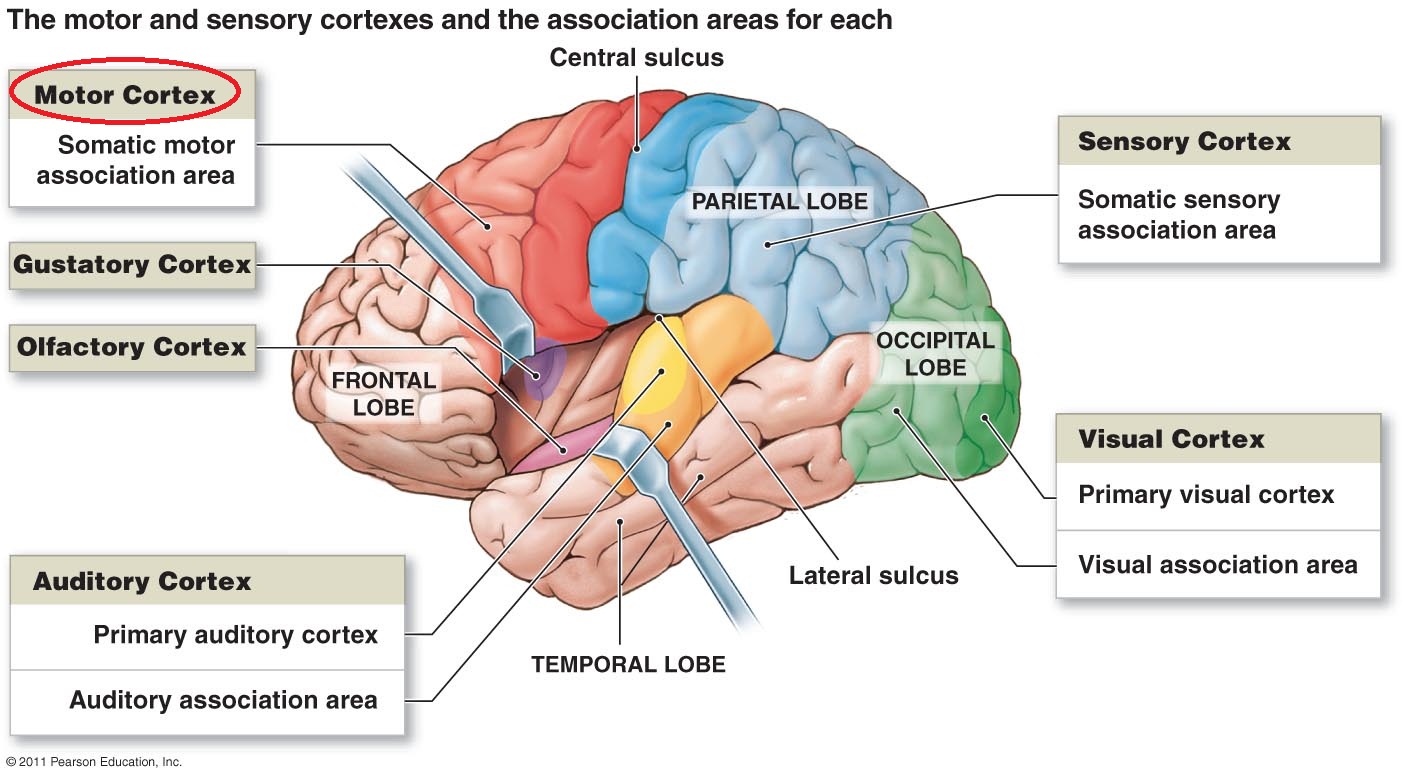

The spinal cord extends from the bottom of the medulla and through a large opening in the bottom of the skull. The medulla produces reflexive activities such as sneezing, vomiting, coughing and swallowing. Functions of the medulla regulate many bodily activities, including heart rhythm, breathing, blood flow, and oxygen and carbon dioxide levels. At the bottom of the brainstem, the medulla is where the brain meets the spinal cord. Named for the Latin word for “bridge,” the pons is the connection between the midbrain and the medulla. The pons is the origin for four of the 12 cranial nerves, which enable a range of activities such as tear production, chewing, blinking, focusing vision, balance, hearing and facial expression. The midbrain also contains the substantia nigra, an area affected by Parkinson’s disease that is rich in dopamine neurons and part of the basal ganglia, which enables movement and coordination. These features facilitate various functions, from hearing and movement to calculating responses and environmental changes. The midbrain (or mesencephalon) is a very complex structure with a range of different neuron clusters (nuclei and colliculi), neural pathways and other structures. The brainstem includes the midbrain, the pons and the medulla. The brainstem (middle of brain) connects the cerebrum with the spinal cord. The corpus callosum is in the center of the cerebrum. The two halves communicate with one another through a large, C-shaped structure of white matter and nerve pathways called the corpus callosum. The right hemisphere controls the left side of the body, and the left half controls the right side of the body. The two halves join at a large, deep sulcus (the interhemispheric fissure, AKA the medial longitudinal fissure) that runs from the front of the head to the back. It is covered with ridges (gyri) and folds (sulci). The cerebral cortex is divided into two halves, or hemispheres. The cortex has a large surface area due to its folds, and comprises about half of the brain’s weight. Cerebral CortexĬortex is Latin for “bark,” and describes the outer gray matter covering of the cerebrum. Other functions relate to vision, hearing, touch and other senses. Other areas of the cerebrum enable speech, judgment, thinking and reasoning, problem-solving, emotions and learning. The largest part of the brain, the cerebrum initiates and coordinates movement and regulates temperature. The cerebrum (front of brain) comprises gray matter (the cerebral cortex) and white matter at its center. Main Parts of the Brain and Their FunctionsĪt a high level, the brain can be divided into the cerebrum, brainstem and cerebellum. To do this, the central nervous system relies on billions of neurons (nerve cells). Some messages are kept within the brain, while others are relayed through the spine and across the body’s vast network of nerves to distant extremities. Some make you feel tired, for example, while others make you feel pain. Different signals control different processes, and your brain interprets each. The brain sends and receives chemical and electrical signals throughout the body. Gray matter is primarily responsible for processing and interpreting information, while white matter transmits that information to other parts of the nervous system.

The different composition of neuron parts is why the two appear as separate shades on certain scans.Įach region serves a different role. Gray matter is primarily composed of neuron somas (the round central cell bodies), and white matter is mostly made of axons (the long stems that connects neurons together) wrapped in myelin (a protective coating). In the spinal cord, this order is reversed: The white matter is on the outside, and the gray matter sits within. In the brain, gray matter refers to the darker, outer portion, while white matter describes the lighter, inner section underneath. Gray and white matter are two different regions of the central nervous system. What is the gray matter and white matter? It contains blood vessels and nerves, including neurons and glial cells. The remaining 40% is a combination of water, protein, carbohydrates and salts. Weighing about 3 pounds in the average adult, the brain is about 60% fat. Together, the brain and spinal cord that extends from it make up the central nervous system, or CNS. The brain is a complex organ that controls thought, memory, emotion, touch, motor skills, vision, breathing, temperature, hunger and every process that regulates our body.


 0 kommentar(er)
0 kommentar(er)
